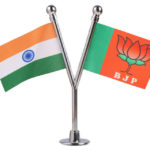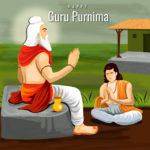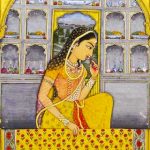It has been less than 15 months since the BJP government was sworn into office for its second term on 30th May 2019. The government has 45 months more to go and it has already taken major decisions like abrogation of article 370, CAA, and now the foundation for construction of Ram Mandir at Ayodhya. It has wrested Madhya Pradesh back from Congress and the governments in Rajasthan and Maharashtra seem like in ICU.
The opposition continues to be in disarray, and Congress the main opposition party is caught like a deer in headlights, struggling with infighting and still grappling over the succession issues.
The government and party have struggled with many challenges like Delhi Riots and COVID-19 and struggling economy. However, the party has managed to own its success and distance itself from the failures.
The recent MOTN survey of India Today gave clear thumbs up to Modi Govt with 66% of voters choosing Modi with a 58% lead over Rahul Gandhi who was preferred by a mere 8%.
In a recent survey focussed on rural population, by Gaon Connection, 74% of rural population surveyed are satisfied with the steps taken by Modi Govt to fight COVID-19 crisis.
One week they say is a long time in politics so theoretically things could change quickly.
However, there is no doubt that BJP is firmly in control of polity and governance and is setting the agenda for the national politics like Congress was doing from independence till eighties.
I believe the direction of discourse and politics in India has firmly shifted and will stay like this for the next few decades with BJP as the fulcrum of this politics.
When I wrote the first part of my 4-part series on this in July last year, several people wrote back agreeing and some not so sure. A year down the line things are much clearer and more visible signs of this fundamental shift have emerged.
This is the third part of the analysis on why BJP is set to dominate the Indian polity till at least 2040 and beyond.
The first part dealt with how BJP and RSS effectively harnessed the “Giver” energy instinct of people as against the “taker” energy of the opposition. You can read the part-I here
The second part dealt with three important elements of the organization that are critical to the success of BJP – Scale, Succession and Structure.
The first two parts dealt with philosophy and organisation that is central to the electoral battles that are route to power.
However, winning elections and being in government is only one aspect of being in control or being in power.
In the third and fourth part, I will focus on how BJP has finally understood and putting a long- term strategy in place to the “indirect” levers that are equally if not more critical than winning elections.
In dictatorships or monarchies, the governments can exercise absolute control over the populace as they control all the levers directly and indirectly.
In democracy, the control of indirect levers is distributed so managing the levers has to be subtle and done carefully and thoughtfully.
These levers while visible cannot directly be controlled by the government. Appropriate management of the levers is key to gaining control of the direction of the polity and the populace without disturbing accepted principles of democracy.
If you think of the game of power as driving a car, then the organizational machinery to win elections is like the steering wheel of the car.
However, the core engine for being in power is the confidence that you deserve to be in power and the strong “will” and the desire to sustain it.
There are several reasons for the success of Mughal invaders and European colonial forces in their battles in all countries in Asia and Africa.
However, the biggest foundational element of this success is the will to succeed and the ambition and confidence that powers the conquests and the moves to acquire other territories.
What differentiates the BJP of today with the BJP of yesteryears is this indomitable will for power and the confidence that they deserve to be in power and an unapologetic attitude to power. There is a certain ruthlessness necessary to acquire and sustain power by “Sam, Dam, Dand, Bhed”.
It was not an accident that Congress had such a long run in power from 1947 till 2014 barring a few interruptions in 1977, 1989, and 1998. They exhibited that ruthlessness and the guile needed to stay in power. They also had a confidence and arrogance which helped.
BJP has steadily worked on all the other attributes required but the leadership earlier lacked this confidence.
This hunger for power and ruthlessness is a crucial element that was completely missing in the previous decades when the focus was completely on grassroots building and organization building with power considered as a distant goal.
With Modi and Shah at the helm, BJP has not only plugged that gap but is also preparing a second layer with leaders like Yogi Adityanath who will carry forward that baton.
Vajpayee was seen as softer compared to Advani. Advani was seen as gentle compared to Modi. Modi is seen as more secular when compared to Shah. Shah is generous to adversaries when compared to Yogi. BJP is slowly institutionalizing the confidence and ruthlessness and making a structural strength out of it.
So, the engine of the car is the will and the confidence to be in power. The organizational machinery of BJP and RSS is the chassis and frame which holds the car together.
Election winning machinery of BJP is the steering wheel and their people when in government act as the accelerators.
However, you cannot drive a car with only the engine and the steering wheel and accelerators.
You need an assembly of micro and macro gears, and you need the fuel.
BJP has been smartly using Nationalism as the fuel to run the car. This comes naturally to BJP as this has been their electoral plank from day one when the Jansangh was formed and ShyamaPrasad Mukherjee opposed the Kashmir constitution and article 370.
Congress which owned this plank till 1947 made the foolish mistake of distancing itself and associating itself with ideals like Socialism and Secularism which were inserted in the constitution by Indira Gandhi in the 70s.
While the BJP has continued to hold onto Nationalism, Congress continued to side itself with the left liberal blocks by mouthing platitudes of secularism and socialism. This worked well through the nineties and even till the first decade of 2010 till the various splinter groups of Janata Dal had some power in UP, and Karnataka and left had some relevance in Bengal, Kerala, and Tripura.
As left lost its relevance everywhere except Kerala, and people understood that the Gowdas, Yadavs and Mayawatis were more about benefiting their own families, they got disillusioned with Socialism.
Congress policy of appeasement, and the left liberal elite’s disdain for genuine national sentiment, and fatal errors like siding with those who favor breaking of India has ensured that secularism has become a fancy word. BJP has largely succeeded in getting itself positioned as a “national” force while anyone who opposes BJP is painted as “anti-national” most of the time.
Loving your parents and your country comes naturally to people. It is easy to tap into this sentiment and marshall the people. In contrast, organizing people around vague western imported principles of liberalism and secularism which cannot resonate with people alienates more than connects the people. BJP has stayed focussed on this principle of Nationalism and opposition has been foolish in trying to fight it with western imported ideals and agenda.
The results are obvious to all.
Nationalism is now the fuel that will power BJP’s drive for power for time to come.
In the race to power, BJP’s car is running fastest now, the confidence and ruthlessness is the engine, organizational backbone of RSS is the chassis, election machinery is the driving wheel, and when in governance it accelerates.
This alone is not enough to ensure long term dominance. There are multiple gears, intertwined with each other that are necessary to acquisition and sustenance of power
There are nice gears, which for simplicity can be called the RANGMEDIA gears. These are
1.Religion
2.Administration
3.NGO
4.Geopolitics
5.Media
6.Entertainment
7.Data
8.Institution
9.Academics
The fourth and final part will be about how BJP is steadily making sure of the control over these nine levers which will perpetuate the power.











